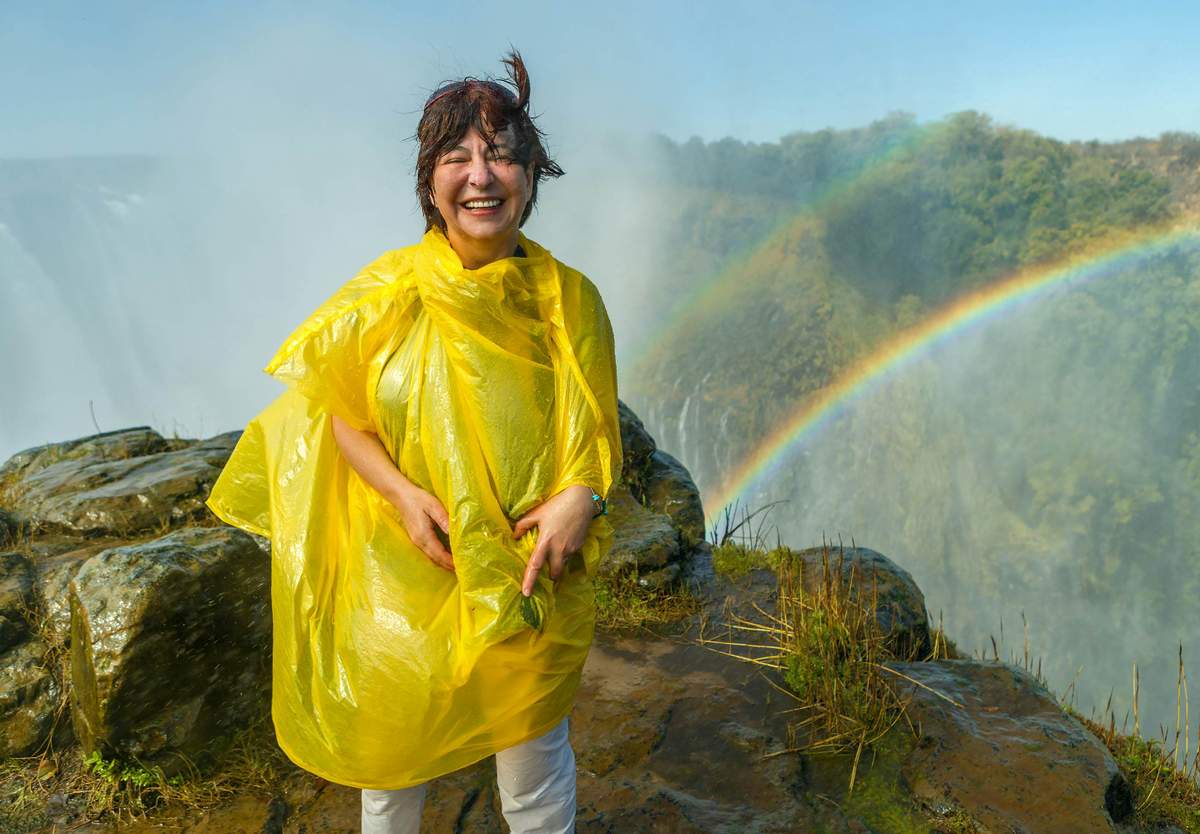Africa's largest wildlife migration: the bats of Kasanka National Park
Oct 2, 2019 • 4 min read

At sunset the skies above Kasanka fill with straw-coloured fruit bats during the migration © Mark Carwardine / Nature Picture Library / Getty Images
Despite what most people think, Africa's largest wildlife migration does not take place on the savanna of the Serengeti and Masai Mara. Instead it takes place in the skies over the Congo and Zambia, when more than 10 million straw-coloured fruit bats make their way to Kasanka National Park between October and December.

What is it?
Animal migrations are one of the largest draws for tourists throughout Africa. The great wildebeest migration between Tanzania and Kenya is the most well-known, and sees almost two million wildebeest and zebra looping through an area of more than 10,000 sq km – it's thought to drive millions of visitors to Kenya and Tanzania each year. While Kasanka's bat migration may be lesser-known, it tops many of Africa’s more famous migrations in the sheer numbers of mammals participating. From October to December, approximately 10 million straw-coloured fruit bats arrive in the park to settle in a small patch of swampy forest.
"The scale of it is immense – bats as far as the eye can see in every direction."
Geraldine Taylor, from the Kasanka Trust, goes on to say, "Each evening millions of bats lazily fly off to find some food as the sun sets."

What to expect
There are plenty of viewpoints throughout the park, ranging from hides (wooden platforms built in trees) to public viewing areas. According to Taylor, hides are limited in number and mainly used by lodge guests who are accompanied by a knowledgeable guide. The public viewpoints are open areas where people can sit on benches and have unobstructed views of the bats as they start to fly off to feed. While hides give visitors a view of the bats as they emerge, Taylor says the public viewpoints are better for witnessing the sheer scale of the migration.
"They are big bats, with wing spans of around 80cm (32 inches), so it’s quite fun to pick out individuals and watch their progress."
Taylor adds, "Sometimes one takes a small dive as it scratches its neck with its claw. One may have a hole in its wing while another may have a sort of Afro hair style."

During the day you'll see the squeaking masses of bats clinging to tree canopy above; it's not unheard of for branches to collapse under the weight of the migrating mammals. Come sunset, you'll see the small, dog-like faces looking down on you as they soar past.
Though Kasanka is one of the smallest national parks in Zambia at only 470 sq km (181 sq miles), it has a rich biodiversity due to its location within wetlands and floodplains. In addition to the millions of straw-coloured fruit bats, the park is home to nearly 500 bird species and 114 mammals, including a small, recovering population of elephants. Puku and sitatunga are common sights, while lucky visitors may see buffalo, antelope and other more elusive mammals.

What to know before you go
Zambia is considered one of the safest countries in Africa, and a 90-day visa can be obtained at both the Kenneth Kaunda International Airport in Lusaka or Harry Mwanga Nkumbula International Airport in Livingstone. The bats arrive around mid-October and leave towards the end of December, so the best time for guaranteed bat viewing is the whole month of November.
Though the bats may be the main event, it's important for you to take into account the weather patterns, as well as other attractions you plan on seeing. For example, if you'd like to take in a side trip to Victoria Falls then you should try to visit before December when the water levels are sure to be low enough to access Devil’s Pool. Dry season typically runs from May to November, so expect blue skies and some of Zambia’s hottest temperatures during October and early November. Late November and early December mark the beginning of the rainy season, which continues through to March.
Taylor recommends chartering a plane from Lusaka, as the seven-hour drive from the city is often expensive and inconvenient. She says the best way to see and enjoy the park is by foot, alongside a local guide. Guests are also welcome to drive around the park as they please.

Where to stay
Wasa Lodge is Kasanka National Park’s main lodge, featuring catered chalets overlooking Lake Wasa – it's a 30-minute drive away from the section of forest where the bats nest. Luwombwa Lodge is a smaller lodge on the banks of the Luwombwa River, but it's about an hour by car from the migration. There are also various campsites and self-catered tented camps throughout the park.
Optional add-ons
Besides taking in Victoria Falls, Taylor says there are a number of other natural spectacles nearby, including the Bangweulu Wetlands – a large, flat plain full of water birds as well as herds of zebra, tsessebe and buffalo. The Mutinondo Wilderness is another beautiful area up north where visitors can enjoy the rocky hills and expansive miombo woodland by foot. "If you are a real adventurer I would recommend Nsumbu National Park on Lake Tanganyika," Taylor says. "It’s a fisherman’s dream with crystal clear waters, and good swimming and snorkeling outside of the park."
You may also like:
Bangweulu and Liuwa: Zambia's safari surprises
DIY safari: a drive on the wild side in Zambia
Wild things: safari alternatives for nature lovers
Plan with a local




